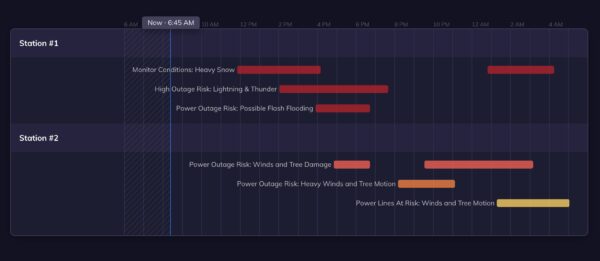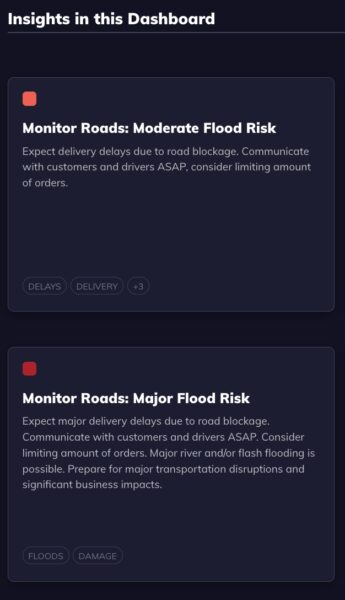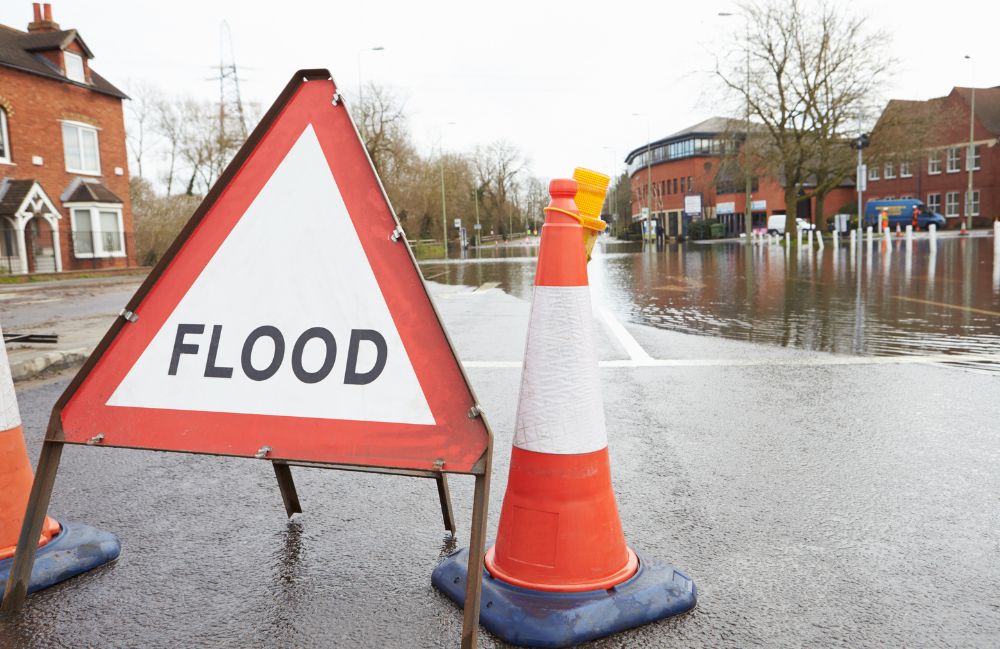September 2023 saw an intense slough of flooding from typhoons, hurricanes, and damaged dams across ten countries and territories over the course of just 12 days.
Storms in Europe, including Storm Daniel, led to extreme rain in the Mediterranean, resulting in record-breaking rainfall in Greece, with 29 inches falling in less than 24 hours — the equivalent of 18 months of rain, which led to severe flooding across the region.
The storm’s path eventually made its way to Libya, where we saw the most catastrophic floods kill a reported 11,000 people from the impact. CNN reported, “The disaster has been greatly magnified by a combination of factors including crumbling infrastructure, inadequate warnings, and the impacts of the accelerating climate crisis.”
While organizations work to address climate change at the government level, what can business leaders do to prepare and protect assets and operations in the case of extreme weather like flooding?
In this blog, we’ll review the impact of floods on infrastructure and business and provide a short overview of how your business can prepare with a strong operational plan for climate security.
How Flooding Impacts Infrastructure
July 2023 brought heavy rainfall to the Northeastern U.S., where several storms impacted the states of New York, Vermont, Massachusetts, and Connecticut. The area received the equivalent of two months of rain in just a few days, with the ensuing floods impacting critical infrastructure by washing away cars, roads, and bridges.
Flooding has widespread and detrimental impacts on the infrastructure systems that we depend on. When floodwaters inundate roads, bridges, railways, and airports, transportation is disrupted, sometimes for extended periods. Repairing paved surfaces, tunnels, rail lines, airport runways, and other transportation infrastructure damaged by floodwaters requires enormous investment.
Residential, commercial, and public buildings flooded by high waters commonly sustain damage to structural elements, interiors, and critical building systems. This leads to the need to thoroughly dry, repair, and reoccupy flooded structures, which can be prohibitive.
Many wonder why such flooding is occurring around the world, and it’s important to understand why we are seeing an increase in weather volatility.
Check out Tomorrow.io’s Director of Data Science, Tyler McCandless, as he tells us about flood forecasting in the video below:
Understanding Climate Change’s Effect on Floods
Scientists believe increased global flooding is linked to climate change. Rising temperatures accelerate the melting of ice sheets and glaciers, raising sea levels and contributing to more frequent coastal flooding. A warmer atmosphere also holds more moisture, fueling more extreme rainfall events that overwhelm drainage.
In addition, climate change can alter weather patterns like monsoons and tropical storms to bring more intense precipitation over short periods. As the planet warms, scientists expect more severe and frequent flooding in many regions.
The Direct Impact of Floods on Business
As floods increase, businesses must understand how they can prepare to mitigate such hazards and put in place tools to support their climate adaptation and resiliency planning.
Utilities and Renewable Energy
Extreme weather is the leading cause of electric power outage events, according to the US Department of Energy. The specific impact of flooding on utilities and energy companies is clear: floods can damage power lines and substations, destroy solar panels, wind turbines, and more.
Flooding can knock out power for days or even weeks depending on the severity of the floods, devastating your ability to serve your customers.
The Solution
What can you do to prepare for flooding and prevent this damage? Utility and energy companies must set parameters to immediately send out weather alerts when rainfall exceeds specific accumulations in the area of their assets.

Tomorrow.io Utilities & Renewable Energy Weather Risk Dashboard Templates
Instead of waiting for flooding to occur, you can instead flag when there is a risk and activate your emergency plan to minimize damage to assets. This could include flood mitigation strategies like pulling new cables or taking equipment offline before the flooding starts. The goal is to be proactive, rather than reactive, to minimize outages and damage to equipment.
Trucking and Road Logistics
Whether you’re shipping food or medicine or furniture, weather can always slow your deliveries or put them at risk of damage along the road. When it comes to flooding, you don’t want your truck drivers or your cargo stranded on a washed-out road, or — even worse — overturned and destroyed. The risk to employees and to your bottom line from flooding is high.
The Solution
How do you know when to re-route your trucks away from the areas experiencing dangerous levels of rain? You need to monitor the risks of flooding along the route, automatically alerting your drivers so they can adjust their course and avoid danger.

Tomorrow.io Transportation and Logistics Weather Risk Dashboard Templates
Rather than getting stranded on a closed road, your drivers can avoid the flooded areas entirely, keeping your cargo and employees safe and secure.
Shipping and Intermodal
While the flooding in Europe was inland, the risk of coastal flooding is also on the rise. Experts predict that flooding could significantly impact global port operations by as early as 2030.
Because ports are already at sea level, the risks are heightened. While docks may not be impacted, flooding of the surrounding infrastructure of roads, railheads and supporting facilities in the vicinity of the ports is the challenge.
The Solution
When there is a high risk of flooding from a hurricane or severe storm, you can activate your emergency plan and take immediate action to remove or secure equipment.

This can not only prevent damage to valuable assets, but also keep employees safe and get shipments back on track faster after the flooding has subsided.
On-Demand Services
Similar to trucking, on-demand businesses that deliver food, mobility, and more have to understand how flooding can slow ETAs and impact the customer experience. Even moderate flooding could force couriers to re-route, causing unexpected delays.
For on-demand delivery companies that operate on razor-thin margins, late arrivals can mean bad reviews and rapidly declining revenue.
The Solution
Rather than waiting for a delay caused by flooding on the route, you can proactively communicate with both couriers and customers to ensure safety and set customer expectations.

With a better handle on the risks of weather, you can be proactive, rather than reactive to the weather.
Future Preparedness for Business Operations
You can’t plan for every weather disaster, but you can ensure your business has the necessary information and tools to respond quickly. Monitoring forecasts isn’t enough: you need to know how incoming weather will affect your business today, tomorrow, and next week.
Weather intelligence helps you to identify high-risk weather events and to take a proactive strategy to minimize risk, avoid service disruptions, and mitigate rises in costs.





